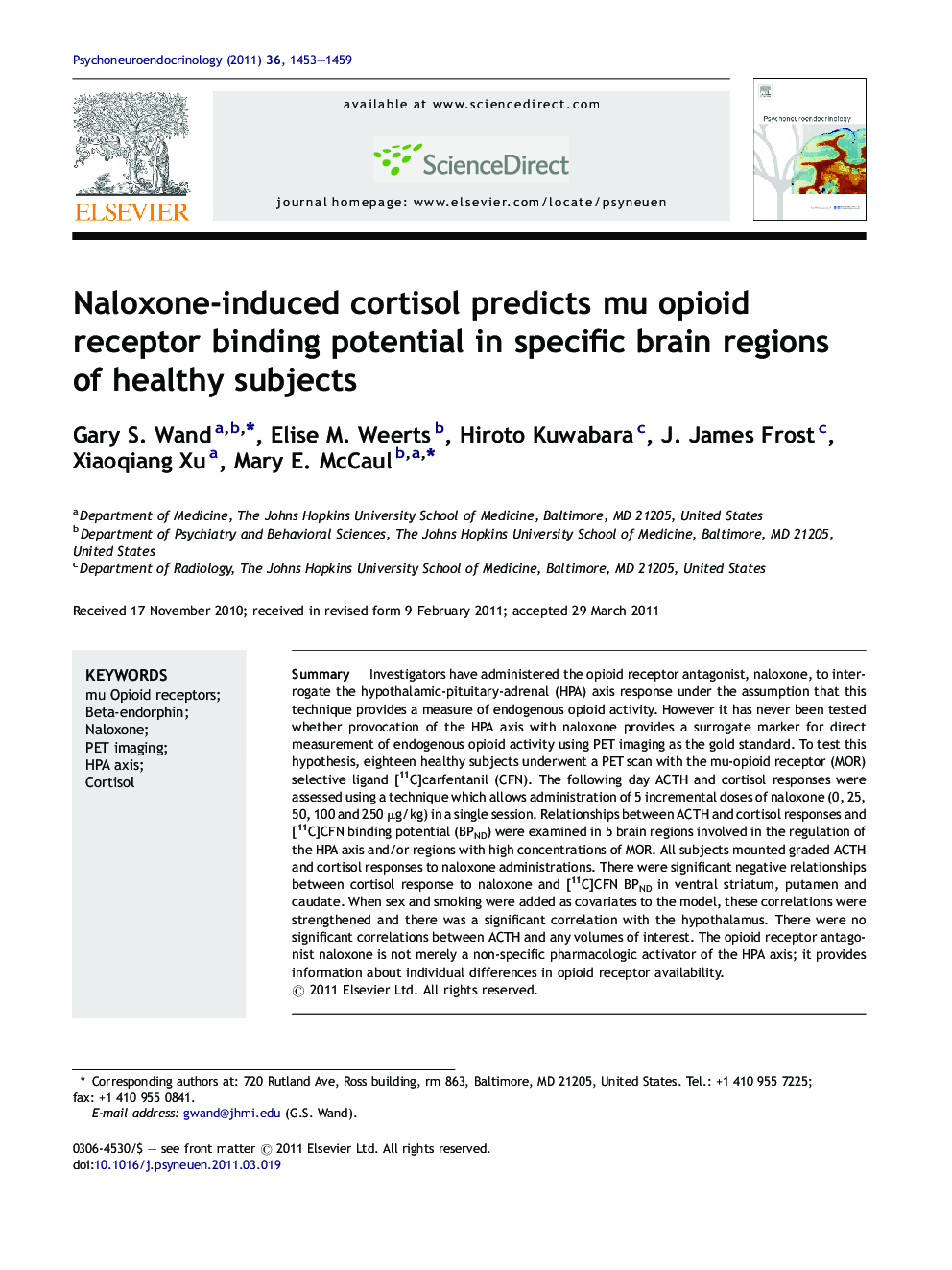| کد مقاله | کد نشریه | سال انتشار | مقاله انگلیسی | نسخه تمام متن |
|---|---|---|---|---|
| 336489 | 547148 | 2011 | 7 صفحه PDF | دانلود رایگان |

SummaryInvestigators have administered the opioid receptor antagonist, naloxone, to interrogate the hypothalamic-pituitary-adrenal (HPA) axis response under the assumption that this technique provides a measure of endogenous opioid activity. However it has never been tested whether provocation of the HPA axis with naloxone provides a surrogate marker for direct measurement of endogenous opioid activity using PET imaging as the gold standard. To test this hypothesis, eighteen healthy subjects underwent a PET scan with the mu-opioid receptor (MOR) selective ligand [11C]carfentanil (CFN). The following day ACTH and cortisol responses were assessed using a technique which allows administration of 5 incremental doses of naloxone (0, 25, 50, 100 and 250 μg/kg) in a single session. Relationships between ACTH and cortisol responses and [11C]CFN binding potential (BPND) were examined in 5 brain regions involved in the regulation of the HPA axis and/or regions with high concentrations of MOR. All subjects mounted graded ACTH and cortisol responses to naloxone administrations. There were significant negative relationships between cortisol response to naloxone and [11C]CFN BPND in ventral striatum, putamen and caudate. When sex and smoking were added as covariates to the model, these correlations were strengthened and there was a significant correlation with the hypothalamus. There were no significant correlations between ACTH and any volumes of interest. The opioid receptor antagonist naloxone is not merely a non-specific pharmacologic activator of the HPA axis; it provides information about individual differences in opioid receptor availability.
Journal: Psychoneuroendocrinology - Volume 36, Issue 10, November 2011, Pages 1453–1459